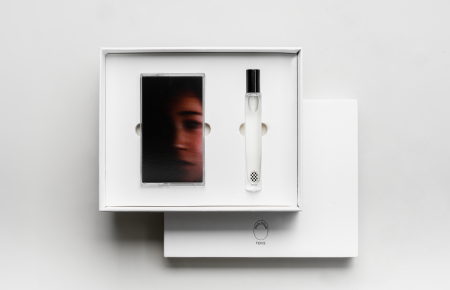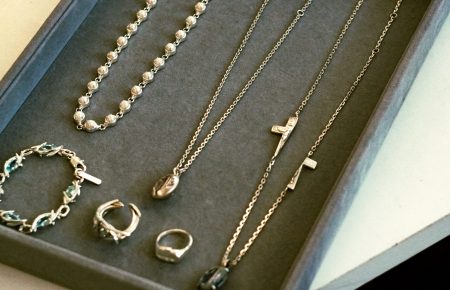In an era where we’re constantly excited by innovation and iterations of popular current designs, it’s often far too easy to overlook artistry and craftsmanship that has prevailed and continued to evolve even after centuries.
Shokunin or “master artisans” remain highly respected and sought after for the fine work they create both in Japan and abroad, but a combination of modernization and recent events have put some of these lineages at risk and key businesses that have likewise been a part of Japan’s cultural fabric are closing.
For Tina Koyama and her fellow co-founder Hana Tsukamoto, there was a great need to not only continue to share this rich heritage with the world, but also create a system that would allow these crafts to thrive long enough to give rise to next generations.
Together, they formed Pieces of Japan (now known as POJ Studio), which is dedicated to educating about the intricacies of Japanese craftsmanship and sharing tangible experiences with it through products made by the masters themselves.
Nate recently spoke with Tina via Zoom to find out more about Pieces of Japan’s origins as a blog and company and its evolution into a lifestyle brand in the form of POJ Studio.

Pieces of Japan and POJ Studio founders Hana Tsukamoto (left) and Tina Koyama (right).
“No matter what you’re designing, if it’s an app or a physical product, to make it something fundamental enough to ideally outlast our own life. It is really challenging to design at a high quality, especially in Tech where it’s all about speed, performance and optimization. I learned a lot through it, but it also left me feeling like I was missing something.”
— Tina Koyama
Nate: I’d just like to start off by asking if you could tell us a bit about who you are and a bit about your background?
Tina: I’m born and raised in Switzerland born to a Japanese mother and a Swiss father.
Both of my parents come from a creative background so it was natural for me to pursue a career in design. While my father designed houses in the real world, I was drawn to the emerging technology, the internet to be specific which lead me to start designing and developing websites at the age of 12.
Since at that time interaction design (or whatever many names it is called to be designing in the digital space ) wasn’t something you could study, I decided to study the roots of design and join the historical Schule für Gestaltung Zurich, now called Zurich University of Arts, where many well-known typographers such as the makers of Helvetica, Adrian Frutiger or founder of Grid Systems Josef Müller-Brockmann went.
I then left Switzerland driven by the urge to expose myself to a faster-paced and more forward-thinking culture that let me combine my passion for design with technology. After a few years in Tokyo, I realized that Silicon Valley is the place for me to truly do what I loved, which then led me to move to Silicon Valley with my future husband.
There, I first worked in a startup and then joined Twitter, where I worked on the then-controversial ranked timeline, introduced a design system, and developed international product strategy. After over a decade in Tech and our move to Japan, I decided to leave the world of massive scale and speed of Tech, to take a break and try my hand at entrepreneurship to help the struggling artisan community that I was introduced to through my mother.
Something that started bothering me was seeing millions of dollars going into apps that didn’t feel significant and in the meantime, there were multi-generation businesses closing shop.
I just started wondering if there’s something I could maybe do to help? Seeing all the interest in Japan around me, I started wondering if maybe I could bring a little bit of the wealth circulating in Silicon Valley to those slow businesses that would otherwise disappear.
It was always a business idea. Early thoughts included starting a consultancy but that didn’t make any sense since I would be charging the very people I wanted to help survive and continue on to the next generation? I think the endurance of something always felt important to me. No matter what you’re designing, if it’s an app or a physical product, to make it something fundamental enough to ideally outlast our own life.
It is really challenging to design at a high quality, especially in Tech where it’s all about speed, performance, and optimization. I learned a lot through it, but it also left me feeling like I was missing something.
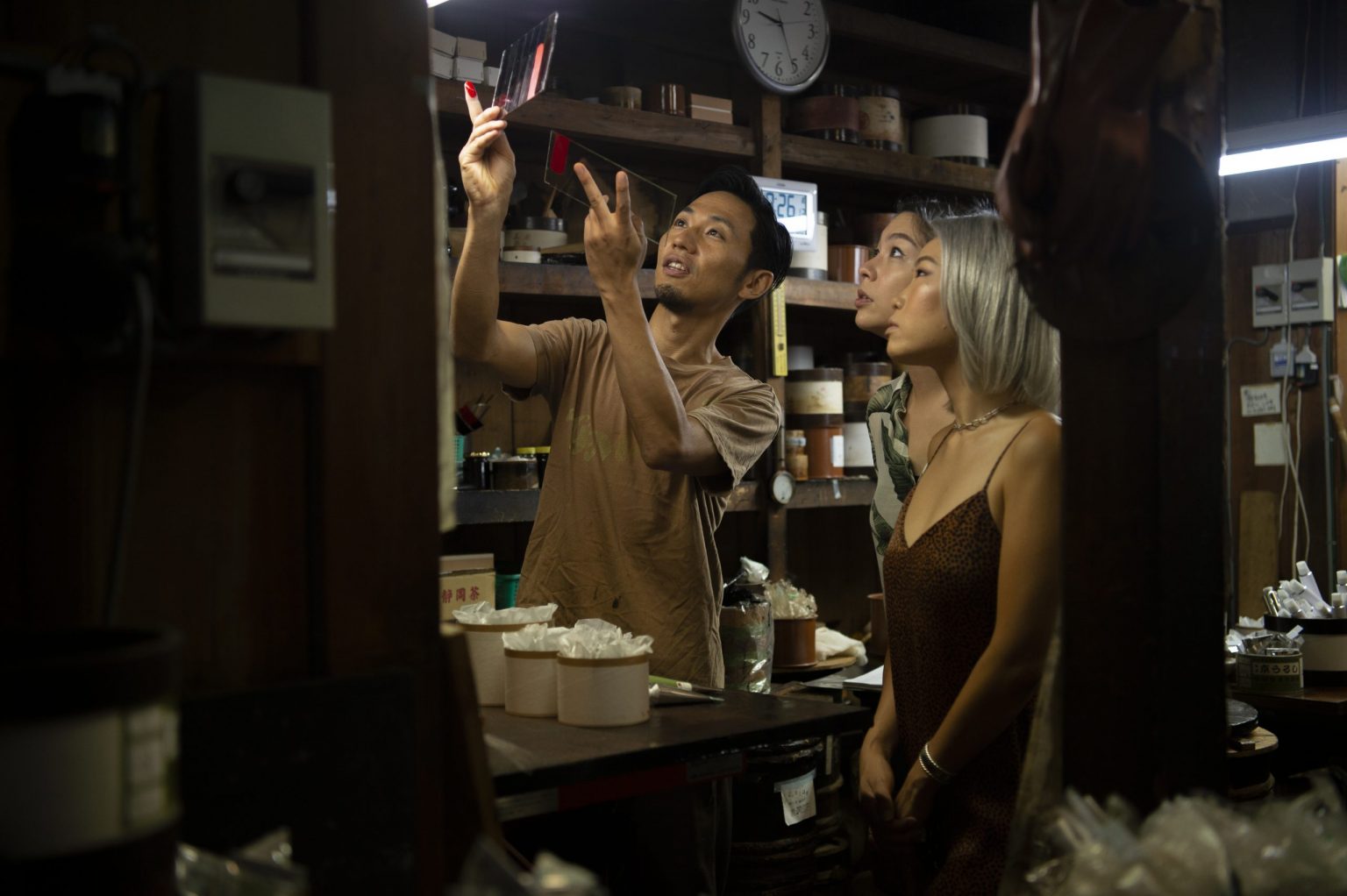
Tina and Hana with Takuya Tsutsumi, the successor who runs Tsutsumi Asakichi Urushi, founded in 1909.
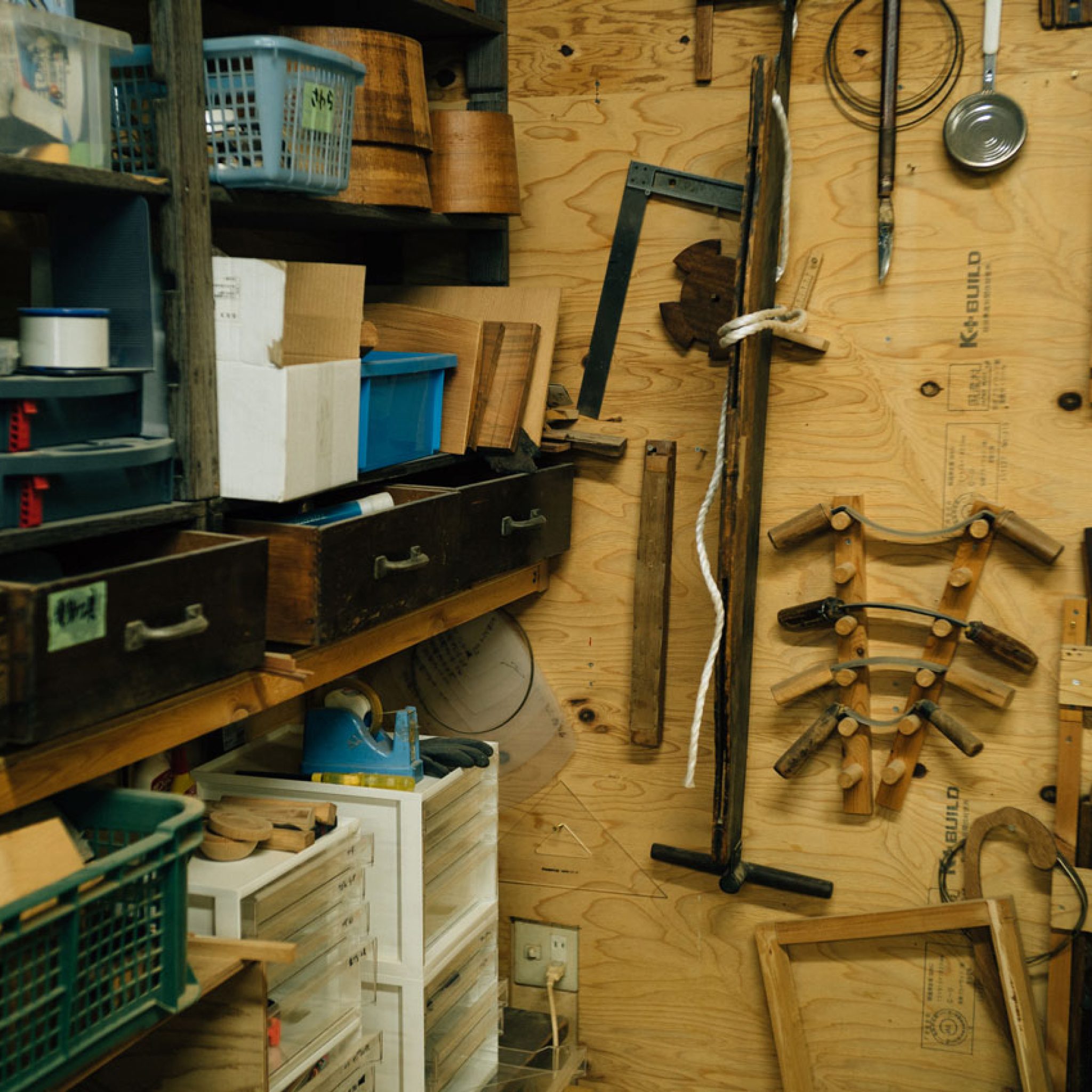


Nate: Seeing both the line of products but also the articles on the PoJ Studio website, I just wanted to know a bit about the process behind how’d you guys decide on the particular items you guys have.
Tina: First of all, I started with a blog when I was still in Silicon Valley and I knew where I would want to get to, but as again, a very strategic thinker, I thought: “I can’t just go launch a product to no audience.”
So I started creating the audience through the editorial pieces and while I’m not a writer, I just thought people that would appreciate the aesthetics and stories I post about would with a high chance also be interested in our brand later on.
That’s how the blog started. A good friend is actually launching a magazine soon, which will be a higher quality version of our blog which will do a much better job than what we currently have. You can find out more about it on storiedmag.com.
But the blog served us well because we were ultimately able to have an audience of about 10,000 people at the beginning of our product launch. It was a great way to research the space we were trying to build a brand in.
We now have three lines: one is the Waza Kit series, which we launched with and that one is about experiencing the craft technique yourself. That’s for the creative makers out there that would like to experience Japanese crafts from the comfort of their own home. Each kit comes with a free online master class which is a great way to experience Japan while it’s challenging to travel.
The idea of having a Kintsugi Repair Kit goes back to before we had any specific products. Our brand was never about pushing people to consumerism and more about creating a sustainable system for the craftspeople to survive. The way to do that most efficiently just ended up being a consumer goods company. And when you sell things, they break at one point or another, often during shipping too. In cases like that it was important to me not to promote the purchase of a new thing, but instead to repair what you have and make it even more special through that repair. With that mindset, the Kintsugi kit became our first product.
The other product we launched with was an Ōryōki. That’s a set of nested bowls that monks use to carry around and then their food is served in those bowls, but that one happened a little bit less planned. It was something I wanted myself and when I posted about it everyone was like, “I want that too!” Now we did give the traditional Ōryōki a twist by making it matte black (usually they are glossy and red or brown) and it’s been one of our bestsellers ever since.
And so you can see there are unplanned things and there’s also very planned things, but we try to be as experimental with that as I was in app development, because ultimately, it’s about creating things that our customers find relevant. And we don’t shy away from being a little experimental while obviously maintaining a very high bar, which is design quality, craftsmanship, and the stories behind them.
Ideally, we work with people that truly need support although it can be challenging to find them since those people might be in their seventies or eighties and no information is available online. Our network broadens everyday so we are hoping that soon enough we’ll be able to get to find them more easily.
“I think one thing that we can manage that well with is because we are direct to consumer and while we have already gotten wholesale requests, we will always protect our products with our brand. […] The authenticity, the closeness is super important to us. Before all of this, I started even without having any products by filming documentaries because I wanted their stories to be communicated before anything else.”
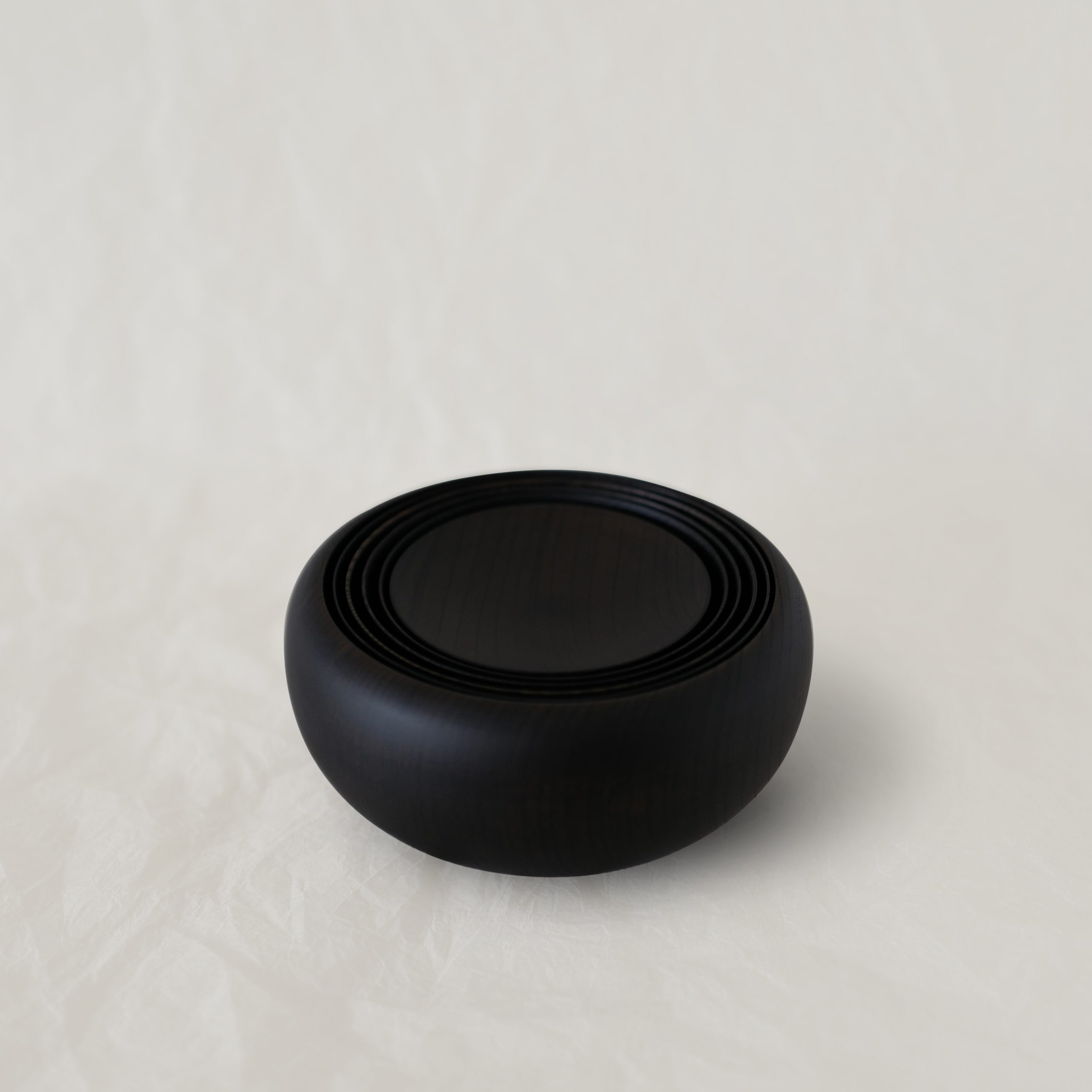
A set of ōryōki (“vessel that contains just enough”), nested bowls traditionally carried by Buddhist monks.
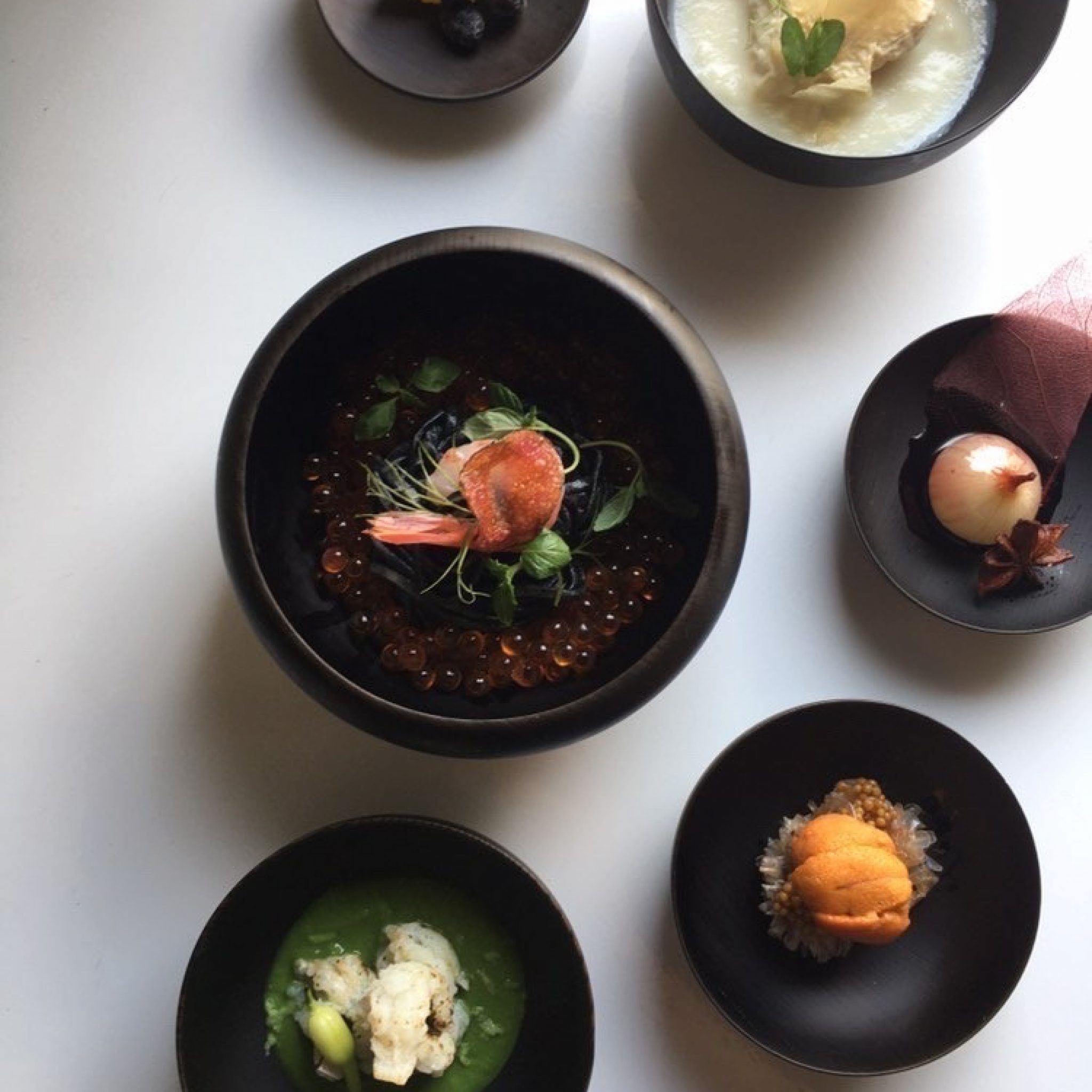
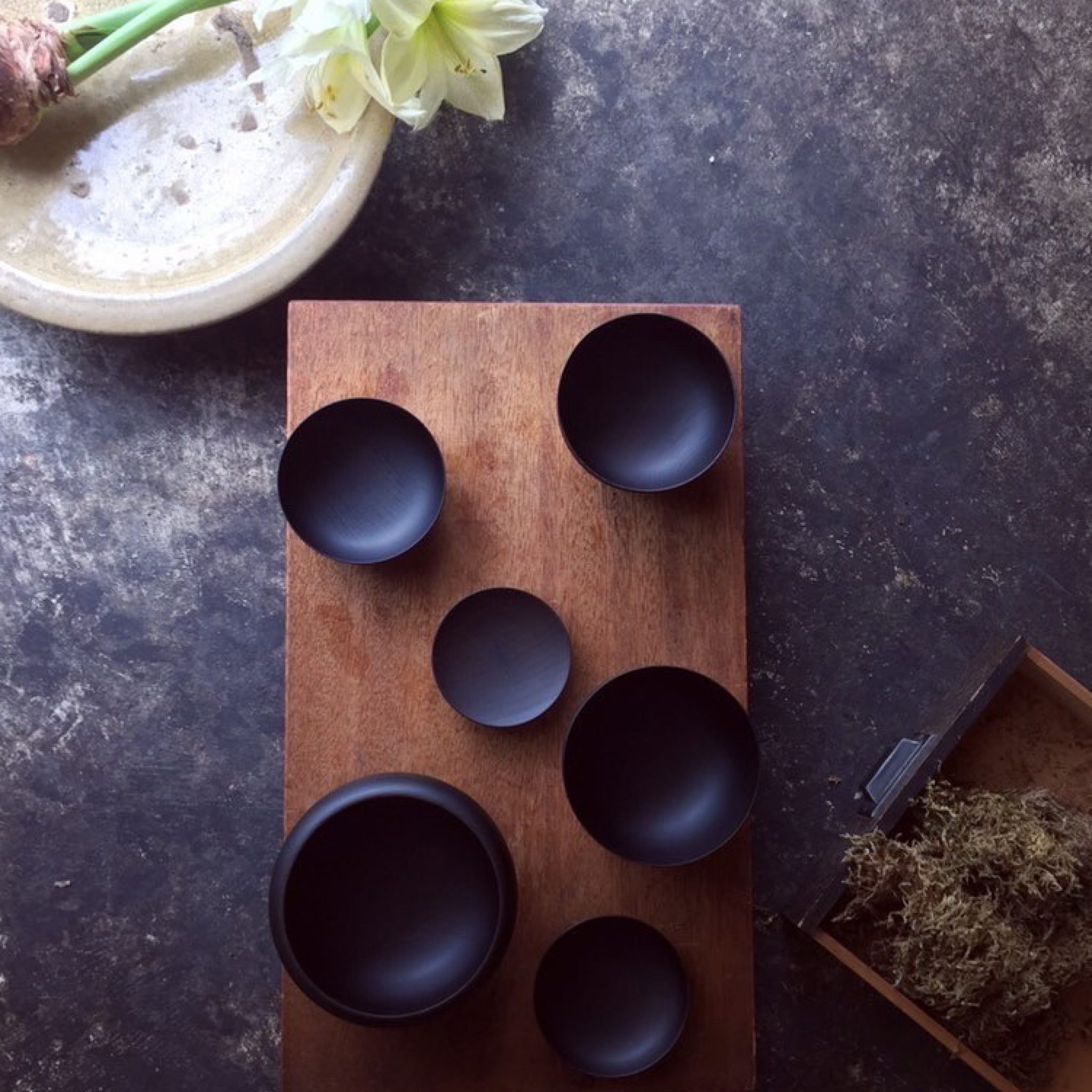
Nate: I could imagine. As you stated, it’s not just a means to push product, but to help this tradition, right? But living here, I can’t help but compare Hong Kong with Japan because obviously people really love Japanese stuff in Hong Kong.
We see a lot of old stores close and craftspeople retire, but not many young people going into the trades because it’s so hard to survive. That’s why I’m always impressed whenever I hear about yondaime (4th generation), godaime (5th generation) and above shokunin, how that lineage has continued for so long. So when you talk about “the next generation,” it really resonates.
So speaking to that relationship between Pieces of Japan and the shokunin: because they’re guarded in that sense and Pieces of Japan becomes the gateway to let’s just say the non-Japanese a consumer who doesn’t know that much about it. I want to know a bit more about how that relationship is protected in a way.
Because I guess in less capable hands, or one with a different set of goals, bringing stuff from Japan to the world could take on a life of its own that has a risk of becoming exoticized. As you said before, you didn’t want a name that could be too Japanesy?
Tina: I believe the very nature of being a direct-to-consumer will allow us to protect our brand and our products. And the brand that we’re building will be what differentiates us the most and hopefully will carry more and more value over time.
And like you said, the authenticity, the story behind is extremely important to us. It is so important that I started by filming documentaries to tell those stories before we had any products.
So I think we will always be a completely different brand to anything even remotely close to us because none of them do that. Not to the extent that we do. And even if we don’t create documentaries, we will always give you insight into how the things are made, who is behind it and the story behind.
And as you mentioned, the industry itself is really hard to get into and the fact that my business partner and I both speak native Japanese, our ties to the culture and the fact that we live here long-term enables us to do what we do now.
Building trust is key. You have to go again and again to build trust. You have to let them know that the motivations behind your business are the right ones. People here are proud and even when they are struggling, it is of utmost importance to them that things are communicated properly and for the right reasons. That’s probably why there aren’t any other people doing what we’re doing. They might have failed in one of the challenges above.
“There’s unplanned things and there’s also very planned things, but we try to be as experimental with that as I was in app development, because ultimately, it’s about creating things that our customers find relevant. And we don’t shy away from being a little experimental while obviously maintaining a very high bar, which is design quality, craftsmanship, and the stories behind them.”
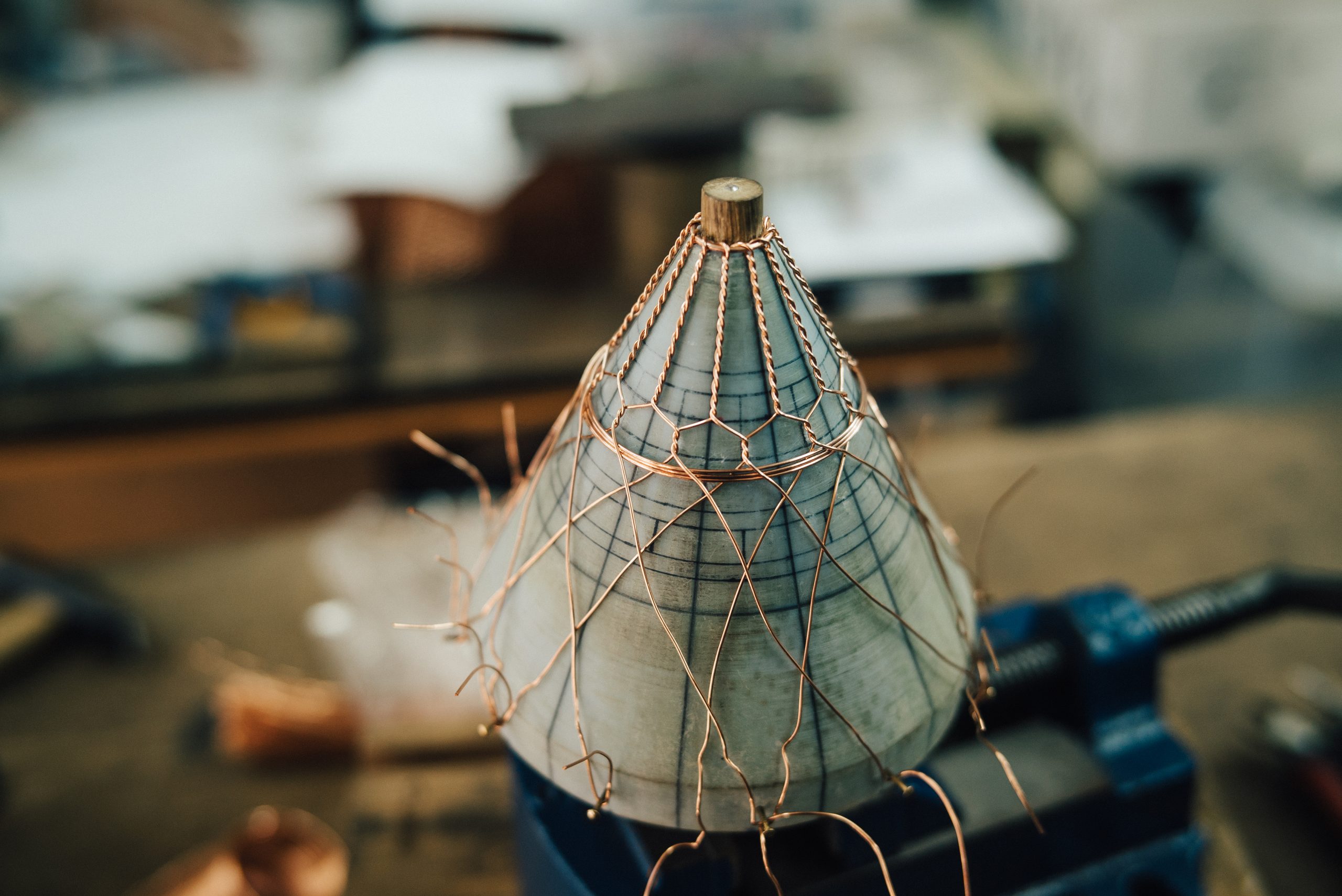
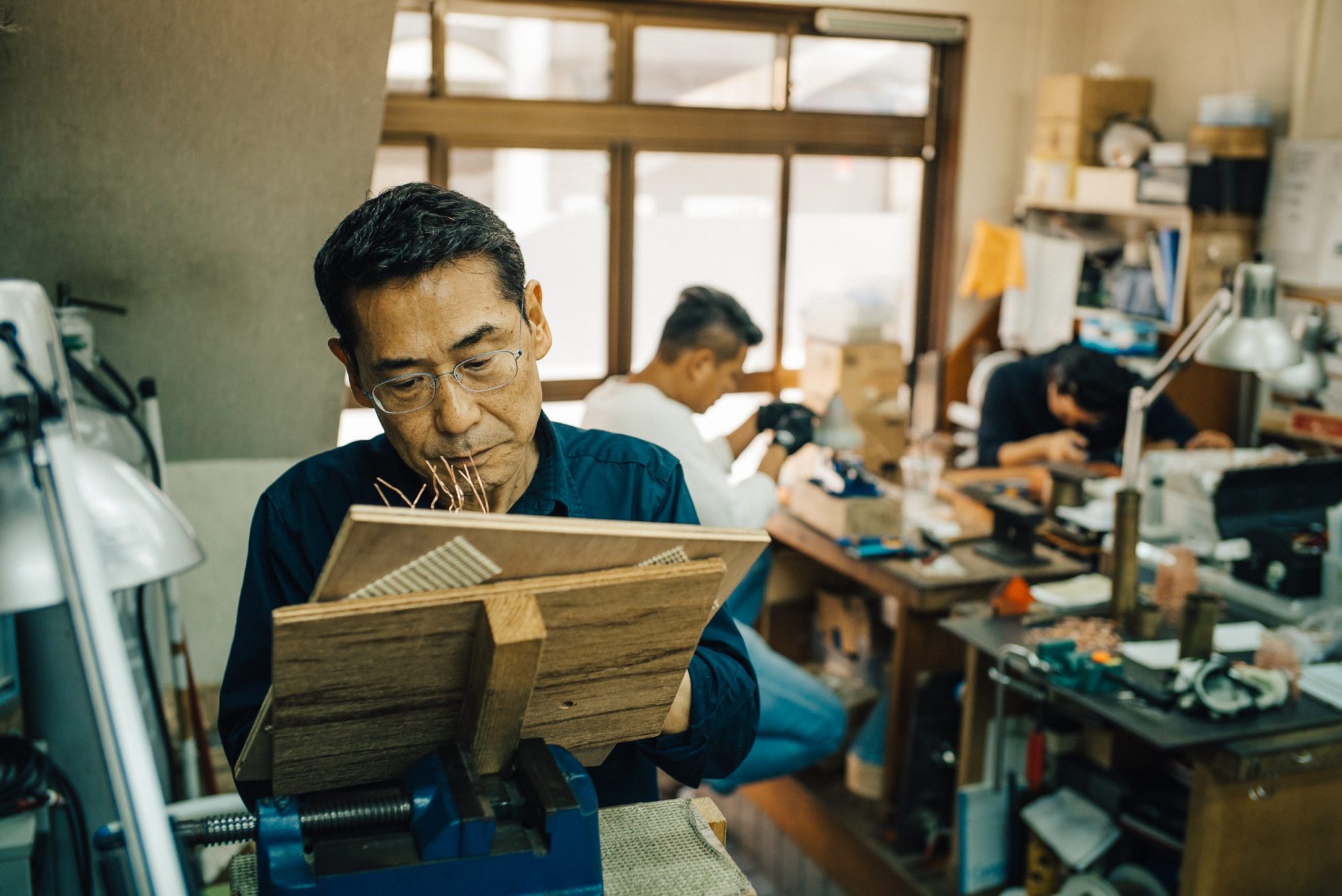
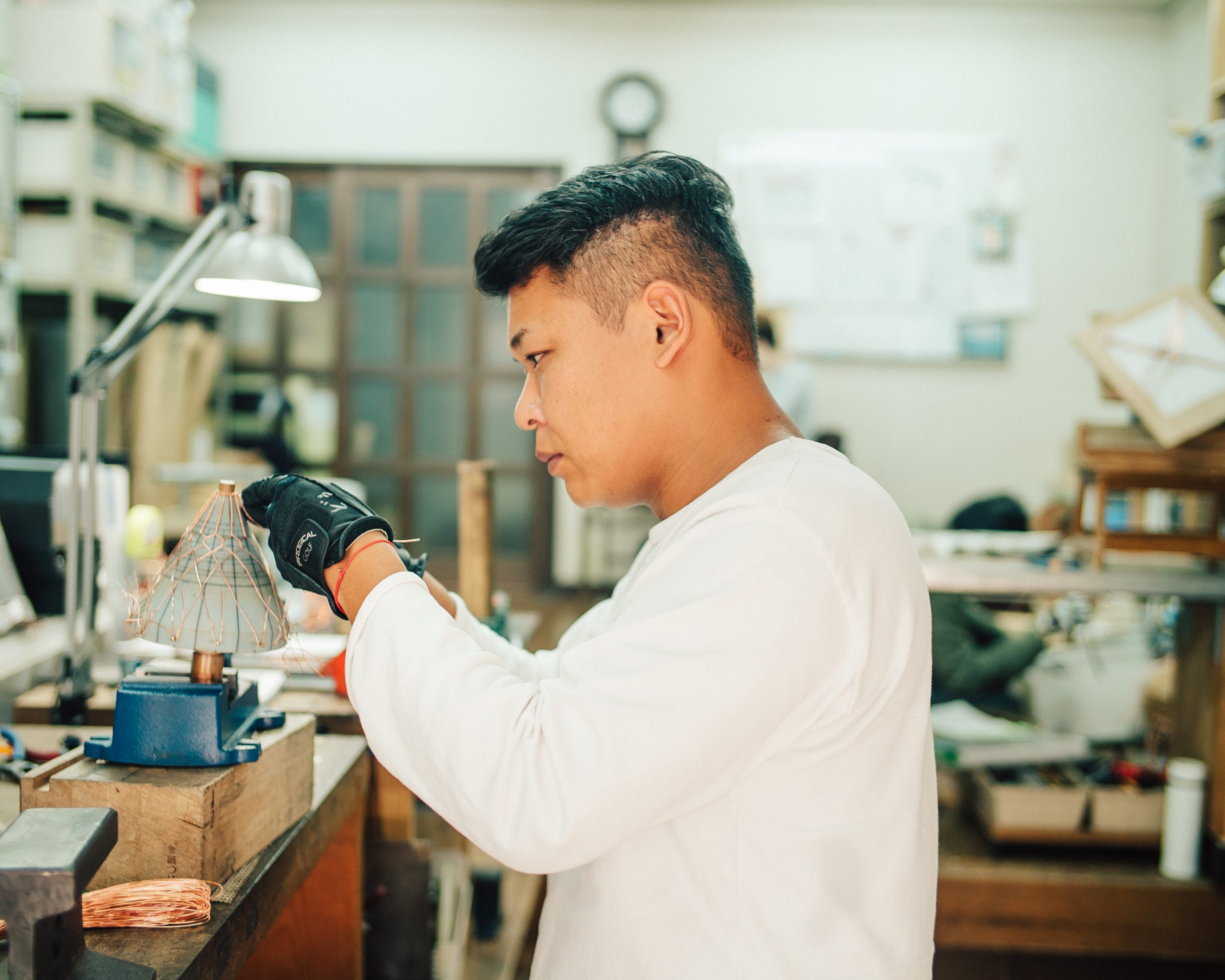
Kanaami-Tsuji in Kyoto specializes in woven wire utensils such as strainers and tea infusers.
Nate: Returning to your example of the Kintsugi. I very much agree with the idea of repairing things and the right to repair your own things instead of planned obsolescence and the like. But with a kit like that, it’s not just the products being introduced and shared, but also the mentality that comes with Japanese products and Japanese culture.
Since Kintsugi and mono no aware (“empathy toward things”) have that connection, are there other ideas that hopefully people take away?
Tina: Sustainability is hugely important to the business as well. We often talk about sustainability in terms of the craftspeople sustainability, but we simultaneously care about being environmentally friendly as well.
While things might cost more, we try to source everything locally, from within Japan. This presents itself quite challenging though, since everything local is more expensive.
The labor cost is higher and the material cost is higher, all of that. But we really care about things being locally sourced, paying the craftspeople properly and NOT to push their margins down as most other brands would do. We go as far as lowering our margin more than theirs.
Hopefully down the line, we can introduce things that are made out recycled or leftover material, broken things or simply imperfect.
Like, for wood, we want to keep the knots — the areas where the branch came out even though it creates a little hole. Those imperfections are beautiful from our perspective and we’re hope our customers will embrace them just as eagerly as we do.
“All I want to do is just help them make money so they can, ideally, not just survive but also hire the next generation to continue on. Beyond our current lives. I think that’s always something that felt really important to me that no matter what you’re designing, is if it’s technology or apps or that it’s something that is fundamental enough to deserve to last for longer periods of time.”
Kyoto-based Kaikado has specialized in tinplate tea caddies since 1875. Takahiro Yagi (below) is the 6th generation of the family.


Nate: You mentioned your partner, Hana. I just wanted to ask about the working dynamic. I guess having talked to you, I know you’re a very strategic, functional thinker. Is she the same or what’s that relationship like?
Tina: So early on before we even, co-founded officially, we talked about how we would split the business if we grew. And it was always very clear. I come from a product development background, so I’d run R&D. I’m also the one taking care of HR, administration, finance, and logistics.
Hana, my co-founder is COO and because of her background is in branding, marketing, and PR, she’d also take on those areas. So while we’re both designers, so far it’s been working out really naturally.
But for now, we’re much more fluid and project-based. She handles certain things, certain projects, and I do others. It’s pretty amazing to have her on my side. We’d never have come this far so quickly without each other.
Nate: Okay, great. So my last question is more a bit about the next steps with regards to products you guys want to cover down the line. Will there be more of a weighting towards Kyoto where you’re based or any other particular region?
Tina: Interestingly enough, there is a lot of traditional crafts in Kyoto as being the old capital, but while a lot of our first few products might be from Kyoto, we will expand our range quickly to include crafts from all over Japan.
Ultimately we’re interested in a lot of things and a lot of products that are coming have not as much to do with us personally. Like for example, we went to Tokushima recently to learn more about Indigo and Washi (Japanese paper). We are also working on something involving Shibori, Japanese tie dye, which a town Arimatsu is most known for— so anywhere, anything that is interesting, we’re going to go to the source!






